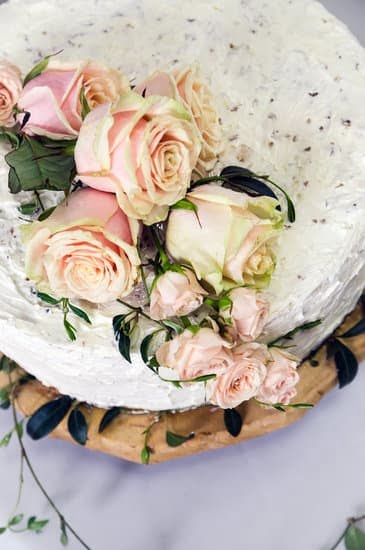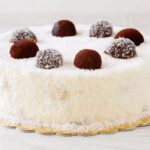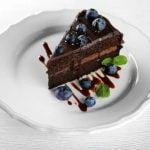Cake decorating is an art that can take any ordinary cake from plain to eye-catching and delicious. One of the key tools in a cake decorator’s arsenal is the piping bag, a versatile instrument that allows for endless creativity and precision in designs. In this article, we will delve into the world of cake decorating with a bag, exploring its popularity, versatility, and how it can elevate the presentation of any cake.
Decorating cakes with a bag has gained immense popularity due to its ability to transform simple cakes into stunning edible works of art. Whether you’re a professional pastry chef or a baking enthusiast, using a bag allows you to create intricate details, add texture, and express your unique style on every dessert masterpiece.
The use of a bag in cake decorating provides the perfect canvas for unleashing your creativity. With steady hands and practiced techniques, you can pipe beautiful borders, elegant rosettes, intricate patterns, and even three-dimensional designs onto cakes. The precision control offered by using a bag makes it an essential tool for both beginners and seasoned decorators alike.
In the following sections of this article, we will explore various aspects of cake decorating with a bag. We will discuss the different types of bags available – disposable or reusable, icing bags or piping bags – along with their pros and cons. We will also dive into selecting the right tips for creating desired designs and mastering basic as well as advanced techniques. Additionally, we will provide troubleshooting tips and suggestions for adding extra flair to your creations.
So whether you’re looking to improve your existing skills or are just beginning your journey into cake decorating, this comprehensive guide will equip you with all the knowledge needed to create stunning cakes that are sure to impress family and friends. Get ready to embark on an exciting adventure where imagination meets frosting magic as we explore how to decorate a cake with a bag.
Understanding the Types of Bags Used in Cake Decorating
When it comes to cake decorating, using a bag is an essential tool that can greatly enhance the presentation of your creations. There are several different types of bags available for cake decorating, each with their own unique advantages and considerations. By understanding the different options, you can select the right bag for your specific needs and achieve beautiful results.
There are four main types of bags commonly used for cake decorating: disposable bags, reusable bags, icing bags, and piping bags. Disposable bags are convenient because they eliminate the need for cleaning after use but may not be as durable. Reusable bags are sturdy and eco-friendly options that can be washed and used multiple times.
Icing bags are specifically designed to hold buttercream or royal icing and usually have a large opening at one end for easy filling. Piping bags have a smaller opening and are typically used with thinner consistency icings.
Each type of bag has its pros and cons depending on factors such as convenience, durability, and the type of icing being used. Disposable bags are great for quick jobs or when using multiple different colors of icing since you can simply toss them away after use.
Reusable bags offer more durability and control over icing flow but require cleaning between uses. Icing bags provide a larger opening to accommodate thicker icings without clogging, while piping bags allow for more precision in intricate designs.
| Type of Bag | Pros | Cons |
|---|---|---|
| Disposable Bags | – Convenient\n – No cleaning required | – Not as durable\n – Limited reuse |
| Reusable Bags | – Sturdy\n – Eco-friendly\n – Can be used multiple times | – Requires cleaning |
| Icing Bags | – Large opening\n – Ideal for thick icings | – Less precision in design |
| Piping Bags | – More precision\n – Suitable for intricate designs | – Smaller opening may cause clogging with thicker icings |
In order to determine the ideal bag for your cake decorating needs, consider the consistency of the icing you will be using, the complexity of the design, and your personal preferences for convenience and environmental impact. Experimenting with different types of bags can help you find the right one that suits your style and gives you the best control over your icing designs.
Selecting the Right Tips for Your Cake Decorating Bag
When it comes to cake decorating with a bag, selecting the right tip is crucial in achieving your desired design. There are various types of tips available, each serving a specific purpose and creating different effects. Understanding the different types of tips and when to use them can help elevate your cake decorations to the next level.
One of the most common types of tips is the round tip, which creates smooth lines and dots. This versatile tip is perfect for writing messages or adding simple borders to your cake. If you’re looking to add more texture and dimension, star tips are your best bet. They create beautiful rosettes, shells, or stars with a ridged appearance.
For more intricate designs and delicate details, leaf and petal tips come in handy. Leaf tips create realistic-looking leaves on flowers or can be used to pipe grass or other foliage. Petal tips allow you to make lifelike flower petals that can be built up into stunning floral arrangements on your cake.
| Type of Tip | Design Created | Ideal Uses |
|---|---|---|
| Round Tip | Smooth lines and dots | Writing messages, adding borders |
| Star Tip | Rosettes, shells, stars | Cupcake decorations, border accents |
| Leaf Tip | Realistic leaves, grass | Floral arrangements on cakes or cupcakes |
| Petal Tip | Flower petals | Creating lifelike flowers on cakes |
Of course, there are many other types of tips available, such as basketweave, ruffle, or lace tips for more advanced designs. It’s essential to experiment and practice with different tips to discover your personal style and develop your skills as a cake decorator. Remember, the right tip can make all the difference in transforming your cake into a work of art.
Preparing the Bag for Decorating
When it comes to cake decorating with a bag, proper preparation is key to achieving beautiful and professional-looking designs. In this section, we will explore the step-by-step process of preparing the bag for decorating, including filling the bag, securing the tip, and folding and twisting techniques. By following these guidelines, you can avoid common mishaps like air bubbles or leaks that may disrupt your decorating journey.
Filling the Bag:
To begin, select your desired icing or frosting and spoon it into a pastry bag. Hold the bag securely at the top with one hand while using your other hand to scoop the icing into the bag. Be mindful not to overfill it as this may cause difficulties in piping later on. It’s always better to start with a smaller amount and refill if necessary.
Securing the Tip:
Once your bag is filled with icing, it’s important to secure the tip properly. Push down any excess icing towards the bottom of the bag and twist or fold over the top several times to create a closure. This will prevent any icing from leaking out while you are decorating. Make sure to hold onto the twisted part tightly as you pipe so that it doesn’t unravel.
Folding and Twisting Techniques:
There are different ways you can fold and twist your bag depending on your preference and comfort level. Some decorators prefer using a single-fold technique by bringing one side of the pastry bag halfway across its width, while others opt for triangular folds for more control in piping precise lines or shapes. Experiment with different methods until you find what works best for you.
A helpful tip to remember is that when folding or twisting your pastry bag, always use gentle pressure to avoid forcing too much air into it. Excess air can lead to air bubbles in your icing, resulting in uneven flow or inconsistent designs.
With these steps in mind, you are now ready to advance onto mastering basic techniques with your cake decorating bag. By ensuring proper preparation, you set yourself up for success and create a solid foundation for your future cake decorating endeavors.
Mastering the Basic Techniques with a Bag
When it comes to cake decorating, mastering the basic techniques with a bag is essential. These techniques serve as the foundation for more advanced designs and can elevate the look of any cake. In this section, we will explore three fundamental techniques: piping straight lines, creating borders, and crafting rosettes.
Piping Straight Lines
Piping straight lines is a simple yet effective way to add clean and precise details to your cake. To achieve this technique, follow these steps:
- Fill your decorating bag with the desired icing or buttercream.
- Hold the bag at a 45-degree angle above the cake surface.
- Apply consistent pressure while squeezing the bag from the top.
- Using slow and steady motions, pipe a straight line onto your cake.
- Release pressure and lift the bag away once you reach your desired length.
Creating Borders
Borders are commonly used to frame a cake or add definition between different sections of decoration. Here’s how to create beautiful borders using a bag:
- Select a border tip that suits your desired design (e.g., scalloped, zigzag).
- Fill your decorating bag with the chosen icing or buttercream.
- Hold the bag at a slight angle towards the surface of the cake.
- Start at one point on the edge of your cake and apply gentle but even pressure to squeeze out icing as you move along.
- Maintain consistent speed and pressure while piping in one continuous motion.
Crafting Rosettes
Rosettes are elegant swirls that add dimension and sophistication to cakes. Follow these steps to create stunning rosettes:
- Choose an open star tip for larger rosettes or a closed star tip for smaller ones.
- Fill your decorating bag with icing or buttercream using one color or multiple colors for a gradient effect.
- Hold the bag perpendicular to the cake surface and apply firm but gentle pressure.
- Start at the center of where you want your rosette and pipe a tight spiral outward.
- Continue piping in a circular motion, maintaining consistent pressure until your rosette reaches the desired size.
By mastering these basic techniques, you can create professional-looking cakes with ease. Remember to practice these techniques and experiment with different designs and colors to truly bring your cakes to life. In the next section, we will explore more advanced bag techniques that will allow you to take your cake decorating skills to the next level.
Elevating Your Cake with Advanced Bag Techniques
Once you have mastered the basic techniques of cake decorating with a bag, it’s time to take your skills to the next level and explore advanced bag techniques. These techniques will allow you to create more intricate and professional-looking designs on your cakes, impressing both yourself and others. In this section, we will introduce you to some advanced bag techniques that will elevate the presentation of your cakes.
One advanced technique that can add texture and elegance to your cake is ruffles. Ruffles are delicate and feminine, making them perfect for special occasions like weddings or birthdays. To create ruffles, use a petal tip and hold the bag at a 45-degree angle.
Apply pressure to gently pipe small waves onto the cake, making sure each wave slightly overlaps the previous one. Continue piping until you have created a beautiful ruffle design around the desired area of your cake.
Another advanced technique worth exploring is basketweave. This technique gives your cake a woven look that resembles a basket. To achieve this effect, use a large round tip or a basketweave tip. Start by piping vertical lines on the cake closely together, leaving space between each line for horizontal lines later on. Once the vertical lines are completed, switch to horizontal lines in an alternating pattern, weaving under and over the vertical lines to create an authentic basketweave appearance.
If you’re looking for something more intricate and delicate, lacework is an excellent choice. Lacework involves using royal icing or buttercream in a lace-like pattern to recreate the look of real lace fabric on your cake. To achieve this effect, you will need a fine round tip or lacework tip with small holes for detailed piping.
Pipe your icing in intricate patterns onto a piece of parchment paper until it hardens completely. Once hardened, carefully peel off the lace design from the parchment paper and place it onto your frosted cake for an exquisite and elegant touch.
Remember, practicing these advanced techniques before attempting them on a cake is always a good idea. Set aside some time to experiment and build your confidence with each technique. The more you practice, the better your skills will become, and the easier it will be to achieve professional-looking results. Don’t be afraid to push yourself creatively and try new designs using these advanced bag techniques-the possibilities are endless when it comes to decorating cakes with a bag.
Adding Flair
In the world of cake decorating, the possibilities are endless when it comes to adding flair and creativity to your designs. With a bag as your trusty tool, you can take your cake decorations to the next level. In this section, we will explore some expert tips and tricks that will help you add that extra special touch to your creations.
One technique to consider is using multiple bags and tips together. By combining different tips in one design, you can create intricate patterns and textures that are sure to impress. For example, try using a star tip for a textured border around the cake, then switch to a round tip for delicate dot details. Don’t be afraid to experiment with different combinations until you achieve the desired effect.
Another way to enhance your cake’s visual appeal is by incorporating unconventional materials into your decoration. Edible pearls or decorative sugar crystals can add an elegant touch to any design. You can also use stencils to create unique patterns on your cake’s surface. Simply place the stencil on top of your cake and gently dust powdered sugar or cocoa over it for a stunning effect.
Adding dimension to your cake is another fantastic way to make it stand out. One technique for creating dimension is called “gilding.” This involves applying a thin layer of edible gold or silver leaf onto specific areas of the decorated cake using a brush or tweezers. The result is a luxurious finish that instantly elevates the appearance of your creation.
When working with more advanced techniques like gilding, lacework, or basketweave, practice makes perfect. It’s helpful to dedicate some time outside of decorating actual cakes just for practicing these advanced techniques. Set aside a small piece of styrofoam or even parchment paper and have fun honing your skills before attempting them on an actual cake.
Troubleshooting and Common Mistakes to Avoid
Once you have gathered the necessary tools and techniques for cake decorating with a bag, it’s important to be prepared for common difficulties that may arise. In this section, we will identify some of the most common mistakes made by beginners in cake decorating with a bag and provide troubleshooting tips to overcome them.
- Clogged Tips: One frustrating issue that decorators often face is a clogged tip, which can disrupt the flow of icing or frosting. To prevent this problem, it is crucial to ensure that your icing is smooth and free from any lumps or air bubbles. Additionally, periodically checking the tip and cleaning it using a toothpick or small brush can help remove any debris that may be causing blockage.
- Inconsistent Icing Flow: Achieving consistent icing flow can be challenging for beginners. If you find that your icing is coming out too fast or too slow, check the consistency of your icing. If it’s too thick, it may not flow smoothly, so you can add small amounts of water or milk to thin it out. On the other hand, if your icing is too runny, adding powdered sugar can help thicken it.
- Quick Fixes: Sometimes mishaps happen during cake decorating, but don’t worry – there are quick fixes available. If you accidentally make a mistake while piping on your cake, simply use an offset spatula or butter knife to carefully remove excess frosting without damaging the cake. You can then smooth over the area with fresh icing and continue decorating.
By being aware of these potential pitfalls and knowing how to address them efficiently, you can minimize frustrating setbacks during your cake decorating journey. Remember that practice makes perfect – don’t be discouraged by mistakes.
Conclusion
In conclusion, cake decorating with a bag is a versatile and popular technique that can elevate the presentation of any cake. By understanding the types of bags used in cake decorating, selecting the right tips, preparing the bag properly, and mastering both basic and advanced techniques, you can create stunning designs to impress your family and friends.
One of the key takeaways from this article is the importance of choosing the appropriate tip for your desired design. Whether you’re looking to create round shapes, stars, leaves, petals, or more intricate designs, selecting the right tip is crucial. By following the guidance provided and practicing different techniques, you will be able to achieve professional-looking results.
Another important aspect highlighted in this article is troubleshooting and avoiding common mistakes. Beginners may encounter difficulties such as clogged tips or inconsistent icing flow. However, by learning preventative measures and having quick fixes on hand, these issues can be easily overcome. Remember that practice makes perfect – by exploring your creativity and experimenting with different techniques, you will continue to improve your skills.

Welcome to our cake decorating blog! My name is Destiny Flores, and I am the proud owner of a cake decorating business named Cake Karma. Our mission is to provide delicious, beautiful cakes for all occasions. We specialize in creating custom cakes that are tailored specifically to each customer’s individual needs and tastes.





